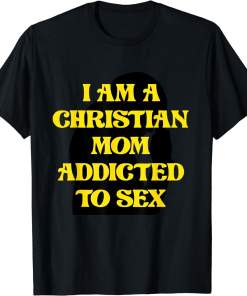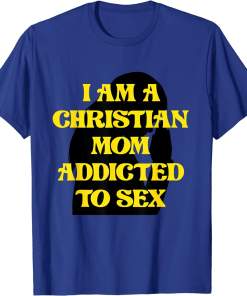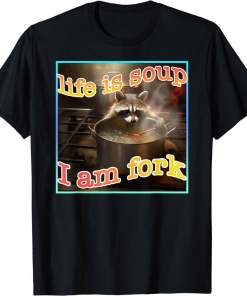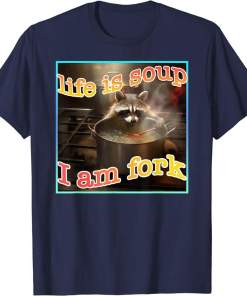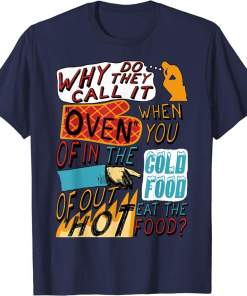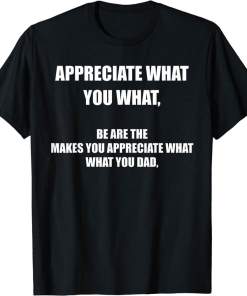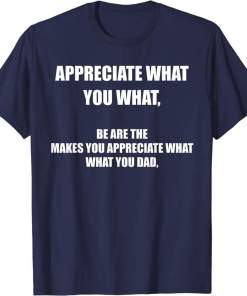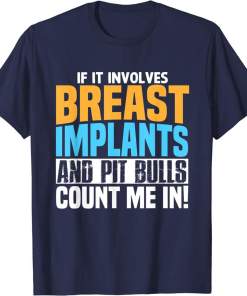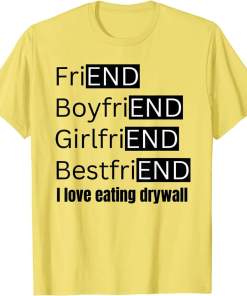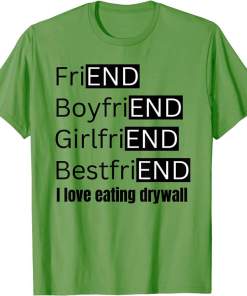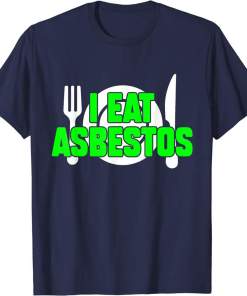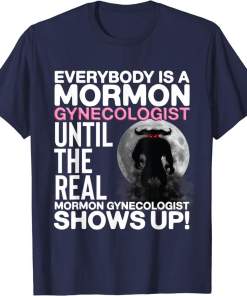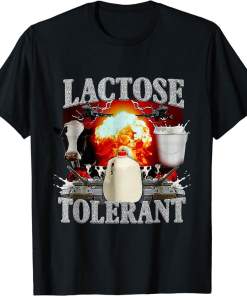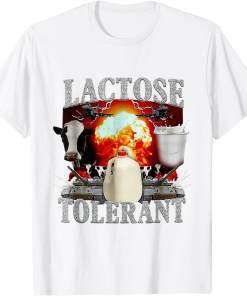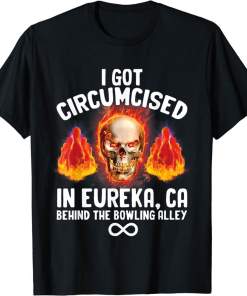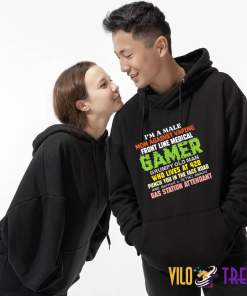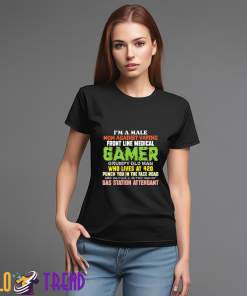Discover the Essence of Fashion – Explore Oddly Specific Shirts Collection at Vilo Trend. Oddly Specific Shirts at Vilo Trend ✓ Iconic designs ✓ Extensive variety ✓ Hassle-free 30-day returns ✓ Dive into the world of Oddly Specific Shirts now! Uncover premium Halloween T-Shirts, uniquely crafted and offered by independent artists, exclusively on Vilo Trend. Experience a spectrum of colors and styles tailored
⏩ You may also love: Pokimane Open Shirt
Oddly Specific Shirts
Oddly Specific Shirts: An Exploration of Quirk in Fashion
A. Definition of Oddly Specific Shirts
Oddly specific shirts, a burgeoning trend in the world of fashion, refer to a genre of apparel characterized by their distinctive and often idiosyncratic designs and messaging. These shirts are distinguished by their playful, witty, or exceptionally niche content, which typically incorporates humor, sarcasm, or highly detailed references to particular subcultures, fandoms, or obscure interests. They are, in essence, a sartorial embodiment of the phrase "inside jokes for your torso." The defining feature of oddly specific shirts is their ability to elicit not just a sense of style but a knowing smile or a hearty laugh from those who encounter them.
B. Growing Popularity and Trend
In recent years, oddly specific shirts have surged in popularity, becoming more than just a fleeting fashion fad. What began as a niche subculture within the realm of casual wear has grown into a widespread trend embraced by diverse demographics. The appeal of these shirts transcends traditional fashion sensibilities; instead, it hinges on their capacity to resonate with individuals who relish the esoteric, enjoy niche humor, or find camaraderie in belonging to a select community of like-minded enthusiasts.
C. Purpose of the Essay: Explore the Phenomenon, Design, and Cultural Impact
The purpose of this essay is to delve into the multifaceted phenomenon of oddly specific shirts. We will embark on a journey to unravel the intricacies of their design, the nuances of the messages they convey, and their broader cultural impact. By dissecting this unique facet of fashion, we aim to shed light on the reasons behind their allure and examine how these shirts reflect contemporary trends in self-expression, humor, and community-building. Ultimately, this exploration will offer insights into the intersection of fashion, culture, and individual identity in a world where the oddly specific has found a peculiarly resonant place.
A. Explanation of What Constitutes an "Oddly Specific Shirt"
Defining the enigmatic charm of oddly specific shirts requires a closer examination of their distinctive attributes:
1. Unconventional Graphics and Typography:
Oddly specific shirts often feature unconventional graphics, typography, and artwork that set them apart from conventional clothing. These designs may incorporate intricate illustrations, whimsical drawings, or a blend of eclectic elements. The typography used can range from playful and handwritten to elaborate calligraphy or font choices that align with the theme of the shirt.
2. Niche or Esoteric Themes:
What truly characterizes an oddly specific shirt is its thematic content, which delves into niche or esoteric subjects. These themes can encompass a vast spectrum, from obscure pop culture references to intricate inside jokes within specific communities. The content often appeals to individuals with a deep affinity for particular hobbies, subcultures, or fandoms. The more niche the reference, the more "oddly specific" the shirt becomes.
3. Humor and Sarcasm:
Humor and sarcasm are prevalent elements in oddly specific shirts. The content may incorporate witty one-liners, puns, or satirical commentary related to the shirt's theme. This infusion of humor adds an extra layer of engagement, making the shirts not just visually intriguing but intellectually amusing.
4. Cultural Commentary:
Oddly specific shirts occasionally serve as vehicles for subtle or not-so-subtle cultural commentary. They may critique societal norms, celebrate counterculture movements, or offer nuanced perspectives on contemporary issues. In this sense, these shirts become more than mere fashion; they become statements and conversation starters.
5. Personal Expression:
Beyond their cultural significance, oddly specific shirts provide a canvas for personal expression. Individuals who wear these shirts use them as a means to communicate their individuality, passions, and affiliations. Each shirt becomes a unique form of self-expression that invites others to engage with the wearer on a personal level.
In essence, an oddly specific shirt is a wearable work of art and communication, blending unconventional design, niche themes, humor, and personal expression. It is a testament to the wearer's identity, interests, and their desire to connect with others who share their peculiar tastes and curiosities.
B. Origins and Evolution of the Trend
The intriguing world of oddly specific shirts didn't materialize overnight but instead emerged organically, with a fascinating evolution marked by several key milestones:
1. The Birth of Niche Subcultures:
Oddly specific shirts owe their existence to the rise of niche subcultures and fandoms. As the internet facilitated connections among like-minded individuals, it also spawned subcultures centered around unique interests. Fans of particular TV shows, movies, video games, or hobbies found their virtual communities and began to express their passion through clothing. The early adopters of oddly specific shirts can be traced back to these fervent online communities.
2. Online Marketplaces and Customization:
The proliferation of online marketplaces and print-on-demand services played a pivotal role in the trend's evolution. These platforms empowered individuals to design and create their own shirts, bypassing traditional fashion industry gatekeepers. This newfound accessibility allowed enthusiasts to bring their incredibly niche ideas to life, catering to audiences that had previously been overlooked.
3. Memes and Internet Culture:
Oddly specific shirts have a symbiotic relationship with internet culture and memes. Memes often serve as inspiration for shirt designs, and, conversely, wearing these shirts can be a form of meme propagation. The viral nature of memes has propelled some oddly specific shirts to newfound heights of popularity. They tap into the internet's love for humor, irony, and the absurd.
4. Celebrating Quirkiness and Authenticity:
In an era where individuality and authenticity are highly prized, oddly specific shirts have found a receptive audience. These shirts are a canvas for embracing one's quirks and unique interests. Wearing them is a declaration of individuality and an invitation for like-minded individuals to connect.
5. Mainstream Recognition:
Over time, some oddly specific shirts have transcended their niche origins to achieve mainstream recognition. This recognition has been driven by viral moments, celebrity endorsements, and the appeal of shirts that cleverly tap into universally relatable themes.
6. Blurring the Lines Between Fashion and Identity:
Oddly specific shirts have blurred the lines between fashion and identity. They challenge conventional notions of what clothing can be by serving as a form of self-expression and personal branding. They've become more than just garments; they are statements about one's identity, affiliations, and sense of humor.
In summary, the evolution of oddly specific shirts is intertwined with the growth of online communities, the accessibility of customization, the influence of internet culture, and the celebration of individuality. From their origins in niche subcultures to their mainstream appeal, these shirts continue to thrive as a unique form of self-expression in the ever-evolving landscape of fashion and pop culture.
C. Notable Examples and Viral Moments
The world of oddly specific shirts is punctuated by memorable examples and viral moments that have left an indelible mark on both the fashion landscape and internet culture. Here are a few notable instances that highlight the phenomenon's impact:
1. The "Three Wolf Moon" Shirt:
One of the early viral sensations in the oddly specific shirt realm was the "Three Wolf Moon" shirt. Featuring a surreal depiction of three wolves howling at the moon, this shirt became an internet sensation in the late 2000s. It gained notoriety for the humorous and exaggerated customer reviews on e-commerce websites, contributing to its cult following. The shirt's unexpected popularity showcased the internet's ability to turn obscure apparel into a cultural phenomenon.
2. The "Doge" Meme Shirts:
Inspired by the "Doge" meme, which features a Shiba Inu dog with broken English captions in Comic Sans font, a range of oddly specific shirts emerged. These shirts often incorporated the iconic Shiba Inu image along with phrases like "such wow" and "much cool." The "Doge" meme shirts exemplified the fusion of internet memes and fashion, creating a shared cultural reference among online communities.
3. TV Show and Movie References:
Oddly specific shirts frequently pay homage to beloved TV shows, movies, and fictional characters. Shirts featuring iconic catchphrases, character portraits, or iconic symbols from pop culture have gained popularity. For instance, shirts inspired by "The Office," "Game of Thrones," or cult classic films like "The Big Lebowski" have become sought-after items among fans.
4. Niche Interests and Hobbies:
The trend extends to highly specific interests and hobbies, with shirts catering to enthusiasts of subjects as diverse as mathematics, knitting, obscure subgenres of music, and vintage video games. These shirts serve as a way for aficionados to proudly display their passion, sparking conversations and connections with like-minded individuals.
5. Viral Challenges and Hashtags:
Social media platforms have played a pivotal role in the rise of oddly specific shirts. Viral challenges and hashtags like #NicheShirtChallenge have encouraged individuals to create and share their own unique designs. These challenges have fueled creativity and brought niche interests into the spotlight.
6. Mashups and Cross-Cultural References:
Some of the most iconic oddly specific shirts are a result of clever mashups and cross-cultural references. For example, shirts that blend elements from different fandoms or juxtapose unexpected themes, such as combining classic art with modern pop culture references, have garnered attention for their inventiveness.
These notable examples and viral moments demonstrate the eclectic nature of oddly specific shirts, showcasing their ability to capture the zeitgeist of internet culture while celebrating the quirks and passions of individuals. In many ways, these shirts have become not just clothing but cultural artifacts that reflect the shared experiences and humor of the digital age.
A. Unique Design Features
Oddly specific shirts are defined not only by their thematic content but also by their distinctive design elements that set them apart from conventional apparel:
1. Graphics, Typography, and Artwork:
a. Intricate Illustrations: Oddly specific shirts often feature intricate and detailed illustrations that resonate with the theme. These illustrations can range from highly realistic depictions to whimsical, abstract artwork. They serve to visually communicate the shirt's message and enhance its aesthetic appeal.
b. Playful Typography: Typography in oddly specific shirts is far from ordinary. It frequently employs playful fonts and lettering styles that match the shirt's theme. Handwritten-style fonts, calligraphy, and creative typography choices contribute to the shirt's uniqueness.
c. Artistic Blending: Some shirts employ a fusion of artistic styles and elements. This blending can include combining classical art with contemporary pop culture references, creating a juxtaposition that adds depth and humor to the design.
d. Color Palette Selection: Color palettes in oddly specific shirts are often chosen with care to complement the theme. Vibrant, contrasting colors are common, drawing attention to the design and making a bold statement.
2. Humor and Sarcasm:
a. Witty Phrases and One-Liners: Humor is a hallmark of oddly specific shirts. They frequently incorporate witty phrases and one-liners that evoke laughter and resonate with individuals who appreciate clever wordplay. These phrases can be direct or subtly humorous, depending on the intended tone.
b. Sarcasm and Satire: Some oddly specific shirts employ sarcasm and satire to convey their messages. They may playfully mock certain aspects of popular culture, societal norms, or niche interests, inviting viewers to engage with irony and satire.
c. Inside Jokes: Many oddly specific shirts feature inside jokes that are only fully understood by those with specific knowledge or affiliations related to the theme. These inside jokes create a sense of exclusivity and camaraderie among those "in the know."
d. Visual Puns: Visual humor is another facet of these shirts. They may incorporate visual puns and optical illusions that require a second look to fully appreciate the cleverness of the design.
In summary, the unique design features of oddly specific shirts encompass a wide array of artistic choices, from intricate illustrations to playful typography. Humor and sarcasm play a central role, making these shirts not only visually engaging but also intellectually amusing. The marriage of creative design and clever messaging is at the core of what makes oddly specific shirts so captivating and appealing to a diverse range of enthusiasts.
B. The Role of Text and Phrases
The text and phrases employed in oddly specific shirts are a pivotal aspect of their design and messaging, contributing significantly to their unique character and appeal:
1. Clever Wordplay:
a. Double Entendres: Oddly specific shirts frequently incorporate double entendres, where a phrase or word has multiple meanings or interpretations. This linguistic cleverness adds depth to the humor and allows for multiple layers of engagement.
b. Puns and Wordplay: Wordplay is a common feature, with puns, linguistic humor, and clever combinations of words. These linguistic quirks often align with the theme, creating a harmonious fusion of language and design.
2. Personalization and Identity:
a. Customization: Many oddly specific shirts allow for personalization, where individuals can add their names, interests, or specific details. This customization enhances the wearer's sense of identity and ownership of the shirt, reinforcing the personal connection.
b. Affiliation and Identity: The text on these shirts often reflects affiliations with particular groups, fandoms, or communities. They act as badges of identity, signaling shared interests and passions to others who recognize the references.
3. Narrative and Storytelling:
a. Narrative Elements: Some oddly specific shirts incorporate narrative elements within their text. These elements may tell a story, create a sense of continuity, or engage the viewer in a brief narrative journey.
b. Storytelling Through Phrases: Phrases on these shirts can be seen as micro-stories. They encapsulate a concept, emotion, or humorous situation within a concise statement, inviting the viewer to engage with the story behind the words.
4. Emotional Impact and Connection:
a. Emotive Phrases: Oddly specific shirts often include emotive phrases that evoke a range of emotions, from laughter to nostalgia to sentimentality. These emotional connections deepen the wearer's attachment to the shirt.
b. Shared Experiences: Text and phrases can reference shared experiences within a specific community or fandom. This fosters a sense of belonging and mutual recognition among individuals who understand the references.
5. Social Commentary and Critique:
a. Satirical Statements: Some shirts use text to make satirical statements or social commentary. These statements can be humorous, ironic, or thought-provoking, challenging societal norms or cultural conventions.
b. Subtle Critique: Through text and phrases, oddly specific shirts may subtly critique aspects of popular culture, politics, or consumerism, inviting wearers and viewers to reflect on these themes.
In essence, the role of text and phrases in oddly specific shirts goes beyond mere decoration; it serves as a vehicle for humor, personalization, identity expression, storytelling, emotional connection, and even social commentary. These linguistic elements play a pivotal role in shaping the narrative and messaging of these shirts, making them engaging and thought-provoking artifacts of contemporary fashion and culture.
C. Target Audiences and Niche Communities
Oddly specific shirts are tailored not only in design but also in messaging to appeal to specific target audiences and niche communities. Understanding these target audiences is key to appreciating the shirts' appeal:
1. Fandom and Enthusiast Communities:
a. Pop Culture Enthusiasts: Shirts that reference iconic TV shows, movies, video games, or books cater to pop culture enthusiasts who want to proudly display their love for specific franchises.
b. Subculture Aficionados: Niche subcultures, such as sci-fi, fantasy, or anime fandoms, have shirts that speak directly to their members, creating a sense of belonging.
2. Hobbyists and Special Interests:
a. Hobby-Centric Shirts: Oddly specific shirts targeting hobbyists, whether it's knitting, stamp collecting, or birdwatching, feature designs and text that resonate with the unique interests of these individuals.
b. Passion-Driven Messages: These shirts often highlight the passion and dedication of hobbyists, serving as badges of honor within their respective communities.
3. Inside Joke and Internet Culture:
a. Internet Memes: Oddly specific shirts inspired by internet memes are designed to appeal to individuals familiar with online humor and viral trends. They create a shared reference point.
b. Subreddit and Forum Communities: Some shirts reference specific subreddits or online forums, reinforcing a sense of community among users of these platforms.
4. Counterculture and Subversion:
a. Counter-Cultural Statements: Certain oddly specific shirts are tailored to individuals who identify with countercultural movements or appreciate subversive humor. They may challenge societal norms or embrace non-conformity.
b. Social Commentary: Shirts in this category may also incorporate social or political commentary, resonating with those who seek to critique or question prevailing ideologies.
5. Personalized Identity:
a. Customizable Shirts: Oddly specific shirts that allow for personalization appeal to individuals who want to express their unique identity or commemorate special occasions.
b. Affiliation with Identity: The text and themes on these shirts can reflect one's affiliations, beliefs, or life experiences, creating a strong sense of connection with the wearer.
6. Humor and Wit:
a. Humor Enthusiasts: Oddly specific shirts with witty and humorous phrases attract those with a penchant for clever wordplay and intellectual amusement.
b. Sarcasm Aficionados: The use of sarcasm and satire in these shirts resonates with individuals who appreciate irony and dry humor.
In summary, oddly specific shirts are meticulously designed to resonate with specific target audiences and niche communities. They speak the language of fandom, hobbies, inside jokes, counterculture, personal identity, and humor, forging connections among like-minded individuals. These shirts go beyond mere fashion; they are symbols of shared passions and affiliations, fostering a sense of community and identity in an increasingly interconnected world.
A. Expression of Identity and Individuality
Oddly specific shirts have a profound social and cultural impact by serving as a canvas for individuals to express their identity and assert their individuality:
1. A Unique Form of Self-Expression:
a. A Visual Manifestation: These shirts offer wearers a visual means of expressing aspects of their identity that may be challenging to communicate through words alone. Personal interests, passions, and affiliations become wearable statements.
b. Statement of Personality: The choice of an oddly specific shirt reflects elements of the wearer's personality. It can convey a sense of humor, a love for the obscure, or a connection to a particular subculture, inviting others to engage with that aspect of their identity.
2. Fostering Connections and Camaraderie:
a. Icebreakers and Conversation Starters: Oddly specific shirts are excellent conversation starters. When someone recognizes the reference or shares the same passion, it can lead to instant connections and shared experiences.
b. Community Building: These shirts act as symbols of belonging to niche communities. When members of the same community or fandom spot someone wearing a familiar shirt, it reinforces their sense of kinship and mutual understanding.
3. Challenge to Conventional Fashion Norms:
a. Breaking the Mold: Oddly specific shirts challenge the conventional norms of fashion, which often prioritize aesthetics over personal expression. By embracing unconventional designs and themes, wearers defy conformity and celebrate their uniqueness.
b. Subverting Mainstream Culture: Some shirts carry subversive messages or satire, providing wearers with a means to critique or parody mainstream culture and societal norms. They empower individuals to engage in cultural commentary through fashion.
4. A Platform for Inclusivity:
a. Inclusivity and Acceptance: Oddly specific shirts can promote inclusivity by signaling an open and accepting attitude towards different interests and identities. They send a message that it's okay to be passionate about niche subjects or belong to diverse communities.
b. Celebrating Diversity: Shirts that represent various subcultures or celebrate diversity—whether related to gender, sexuality, or ethnicity—can foster a sense of pride and acceptance among wearers.
5. Reflection of Changing Values:
a. Shifting Priorities: The popularity of oddly specific shirts reflects a shift in societal values, emphasizing individuality, authenticity, and the celebration of quirks and passions.
b. Rejection of Mass Production: These shirts also align with a growing rejection of mass-produced, one-size-fits-all fashion. They promote the idea that clothing should be a reflection of personal tastes and interests rather than dictated by mainstream trends.
In conclusion, the expression of identity and individuality through oddly specific shirts is a central facet of their social and cultural impact. They provide a unique means for individuals to communicate who they are, connect with like-minded people, challenge fashion norms, promote inclusivity, and reflect changing societal values. As wearable works of self-expression, these shirts have become symbols of personal identity in a world where celebrating one's individuality is increasingly valued.
B. Role in Memes and Internet Culture
Oddly specific shirts have carved out a significant niche in the realm of memes and internet culture, becoming both contributors to and products of the digital age's humor and creativity:
1. Meme Inspiration:
a. Memes into Merchandise: Oddly specific shirts frequently draw inspiration from internet memes. Memes that gain traction online can quickly find their way onto shirts, transforming virtual jokes into tangible fashion statements.
b. Amplification of Memes: When memes are translated into wearable art, they gain a new dimension of visibility. People become walking memes, and the humor or references associated with these shirts can amplify the reach and impact of the original meme.
2. Viral Challenges and Hashtags:
a. Internet Challenges: Some oddly specific shirts gain popularity through internet challenges and viral trends. Challenges like the #NicheShirtChallenge encourage individuals to create and showcase their own unique shirt designs, turning the creation of oddly specific shirts into a participatory online phenomenon.
b. Community Engagement: These challenges foster a sense of community engagement, inviting people to share their creativity and connect with others who appreciate the same kind of humor and references.
3. Reinforcing Internet Subcultures:
a. Subreddit and Forum References: Oddly specific shirts may reference specific internet communities, subreddits, or online forums. By doing so, they not only celebrate these digital spaces but also encourage wearers to explore and engage with these online communities.
b. Internet Language and Inside Jokes: These shirts often incorporate internet language and inside jokes that are familiar to those who spend time online. Wearing such a shirt serves as a signal of shared digital experiences.
4. Propagation of Viral Trends:
a. Trendsetters and Influencers: Influencers and trendsetters in the digital space can amplify the popularity of oddly specific shirts by featuring them in their content. When a prominent online figure wears or promotes such a shirt, it can lead to a surge in demand.
b. Cycle of Virality: Oddly specific shirts exist within a cycle of virality. They can start as a niche reference, gain popularity through internet culture, inspire new memes or challenges, and return to the online sphere, perpetuating their cultural significance.
5. Memorable Internet Moments:
a. Iconic Shirts: Some oddly specific shirts have become iconic in their own right within internet culture. They are celebrated as symbols of online humor and creativity, serving as artifacts of memorable internet moments.
b. Collectibles and Memorabilia: As these shirts gain recognition, they often become collectibles or memorabilia for internet enthusiasts, who treasure them as mementos of their online experiences.
In summary, oddly specific shirts play a dual role in memes and internet culture. They draw inspiration from memes, viral trends, and internet communities, translating digital humor into tangible fashion. Simultaneously, they become vehicles for reinforcing internet subcultures, contributing to viral challenges, and creating new internet moments. In this interconnected relationship, oddly specific shirts serve as both products and catalysts of internet culture, reflecting the ever-evolving and influential nature of the digital realm.
C. Community-Building and In-Group Signaling
Oddly specific shirts play a crucial role in community-building and in-group signaling, fostering connections and a sense of belonging among like-minded individuals:
1. Community Identification:
a. Affiliation with Niche Communities: These shirts act as visual identifiers for individuals affiliated with specific niche communities, fandoms, or subcultures. When someone wears a shirt that references a particular interest, it immediately signals their membership in that community.
b. Recognition Among Peers: Wearing an oddly specific shirt is akin to a secret handshake. It's a way for enthusiasts to recognize and acknowledge one another in everyday life, forging instant connections with strangers who share their passions.
2. Conversations and Camaraderie:
a. Icebreaker and Conversation Starter: Oddly specific shirts serve as icebreakers, sparking conversations among strangers who recognize the references. These conversations can lead to shared anecdotes, recommendations, and even new friendships.
b. Shared Laughter and Experiences: The humor and references on these shirts often lead to shared laughter and experiences. People who understand the jokes or references can bond over their appreciation for the obscure and clever.
3. Identity and Inclusivity:
a. Inclusivity and Acceptance: Oddly specific shirts create an inclusive atmosphere by celebrating diverse interests and identities. Wearers of these shirts convey that they are open to engaging with people from various backgrounds and passions.
b. Validation of Unique Interests: For individuals with unconventional or niche interests, these shirts provide validation. They reassure wearers that it's okay to be passionate about what they love and that there are others out there who share those passions.
4. Subcultural Symbols:
a. Subcultural Icons: Some oddly specific shirts become symbols of subcultures or online communities. They represent a shared ethos and serve as tangible markers of participation and commitment.
b. Collective Identity: These shirts reinforce a collective identity within subcultures or communities. They remind members of the values, inside jokes, and shared experiences that bind them together.
5. Fostering New Communities:
a. Inspiration for New Groups: Oddly specific shirts can inspire the creation of new groups or events centered around shared interests. People who discover others wearing similar shirts may decide to form clubs, forums, or gatherings dedicated to those interests.
b. Online and Offline Fusion: The community-building power of these shirts extends from online spaces to real-world interactions. Individuals who first connect online through shared interests may meet in person, further strengthening their bonds.
6. Cross-Generational and Cross-Cultural Connections:
a. Bridge Generational Gaps: Oddly specific shirts can bridge generational gaps by appealing to shared interests that transcend age. A younger and older generation can connect through their mutual appreciation of a particular theme.
b. Cross-Cultural Connections: These shirts also facilitate cross-cultural connections. People from different cultural backgrounds can bond over a shared passion or reference, breaking down barriers and promoting cultural exchange.
In essence, oddly specific shirts act as more than just garments; they are instruments of community-building and in-group signaling. They create a sense of unity, foster conversations, and validate unique interests, making them powerful tools for forging connections in an increasingly diverse and interconnected world.
D. Examination of Consumer Behavior and Motivation
Understanding consumer behavior and motivation is essential in assessing the impact of oddly specific shirts on the fashion and cultural landscape:
1. Emotional Connection:
a. Emotional Resonance: Consumers are drawn to oddly specific shirts that resonate emotionally with them. Whether through humor, nostalgia, or shared interests, these shirts elicit strong emotional responses, compelling individuals to make a purchase.
b. Sentimental Value: Some oddly specific shirts hold sentimental value. They become treasured possessions linked to specific memories or experiences, encouraging consumers to acquire them as keepsakes.
2. Identity Expression:
a. Personal Identity: Consumers use these shirts as a means of expressing their personal identity. By wearing a shirt that reflects their interests, passions, or affiliations, they communicate who they are to the world.
b. Identity Alignment: Consumers seek shirts that align with the identity they aspire to or want to convey. This can include affiliations with subcultures, causes, or values they hold dear.
3. Social Recognition:
a. Desire for Recognition: Oddly specific shirts offer wearers a chance to be recognized and acknowledged by like-minded individuals. Consumers often wear these shirts with the hope of connecting with others who understand the references.
b. Community Membership: Wearing these shirts can signify membership in specific communities or fandoms, and consumers take pride in being part of these groups.
4. Fandom and Passion:
a. Fandom Affiliation: Consumers who are passionate about a particular show, movie, game, or hobby seek out oddly specific shirts that celebrate their fandom. These shirts serve as a visible badge of their devotion.
b. Collectible Appeal: For some, collecting oddly specific shirts becomes a hobby in itself. Consumers are motivated by the thrill of acquiring unique and limited-edition designs that resonate with their interests.
5. Personalization and Uniqueness:
a. Customization Options: Consumers appreciate shirts that offer customization options. The ability to add personal touches, such as names, dates, or specific details, makes these shirts feel unique and tailored to their preferences.
b. Quest for Uniqueness: Many consumers are drawn to oddly specific shirts because they offer a break from mainstream fashion. The desire to stand out and wear something unique motivates them to seek out these unconventional designs.
6. Online and Offline Engagement:
a. Online Community Engagement: Consumers often engage with online communities and forums related to oddly specific shirts. They seek recommendations, share their collections, and participate in challenges or discussions.
b. Real-World Connections: Beyond the online realm, consumers use these shirts as conversation starters and connectors in real-life social settings. They initiate discussions and build relationships based on shared interests.
7. Cultural Commentary and Satire:
a. Social Awareness: Consumers who are drawn to oddly specific shirts with satirical or social commentary elements may be motivated by a desire to engage with these themes. They appreciate shirts that prompt reflection and discussion.
b. Contribution to Discourse: Some consumers view wearing shirts with social or political messages as a way to contribute to important dialogues and express their views on specific issues.
In sum, consumer behavior related to oddly specific shirts is driven by emotional connections, identity expression, the desire for social recognition, passion for specific interests, and a quest for personalization and uniqueness. These shirts not only serve as a form of fashion but also as a means for consumers to engage with their own identities, their communities, and the broader cultural discourse.
A. Inclusivity and Sensitivity Concerns
Oddly specific shirts, while celebrated for their unique and niche appeal, have also faced controversies and criticisms, particularly related to issues of inclusivity and sensitivity:
1. Exclusivity and Alienation:
a. Niche-Oriented Exclusivity: Critics argue that oddly specific shirts can perpetuate exclusivity by catering to narrow niches and subcultures. This exclusivity may leave out individuals who do not identify with or understand the references.
b. Alienation of Outsiders: Some believe that these shirts, with their esoteric themes and inside jokes, can alienate those who are not part of the in-group. This sense of exclusion can be off-putting to potential consumers.
2. Cultural Appropriation:
a. Inappropriate References: Occasionally, oddly specific shirts may include references that are culturally insensitive or appropriative. Using cultural symbols, stereotypes, or language without proper context or respect can lead to accusations of cultural insensitivity.
b. Misappropriation of Iconography: Shirts that incorporate religious or sacred symbols as part of a humorous or ironic design can be seen as disrespectful and offensive.
3. Offensive Humor and Satire:
a. Subjective Interpretation: The humor in oddly specific shirts can be highly subjective. What some find amusing, others may consider offensive or in poor taste. Controversy can arise when shirts contain content that some individuals perceive as offensive.
b. Risk of Crossing Boundaries: Shirts that use satire to critique sensitive subjects like politics, social issues, or tragedies may be seen as crossing ethical boundaries. Consumers may question the appropriateness of making light of serious matters.
4. Stereotyping and Marginalization:
a. Reinforcing Stereotypes: Some oddly specific shirts may inadvertently reinforce stereotypes related to gender, race, or other identity factors. Critics argue that such reinforcement can perpetuate harmful biases and prejudices.
b. Marginalization of Identities: Shirts that make light of certain identities or experiences may marginalize individuals who identify with those traits, making them feel trivialized or disrespected.
5. Commercialization and Authenticity:
a. Commercial Exploitation: Critics suggest that the commercialization of oddly specific shirts can dilute the authenticity of niche communities and subcultures. They argue that turning niche interests into mass-produced merchandise can lead to a loss of cultural value.
b. Profit Motive vs. Genuine Passion: Some consumers and observers question the intentions of shirt producers. They wonder whether these shirts are created out of a genuine passion for the niche or simply as profit-driven ventures that exploit niche interests.
6. Ethical Production and Sustainability:
a. Ethical Sourcing: Questions may arise about the ethical sourcing and production practices of oddly specific shirts. Consumers concerned about labor conditions and environmental impact may hesitate to support brands that do not prioritize ethical and sustainable practices.
b. Fast Fashion Concerns: The rapid turnover of shirt designs in the oddly specific shirt market can contribute to fast fashion, which has come under scrutiny for its negative environmental and social effects.
Addressing these inclusivity and sensitivity concerns is essential for the continued acceptance and growth of oddly specific shirts in the fashion industry. Brands and creators must strike a balance between celebrating niche interests and ensuring that their designs are respectful, inclusive, and mindful of the potential impact on individuals and communities.
B. Appropriation and Commercialization
Oddly specific shirts have faced controversies and criticisms related to issues of cultural appropriation and commercialization, which have sparked debates within the fashion industry and broader cultural discourse:
1. Cultural Appropriation:
a. Inappropriate Use of Cultural Symbols: Some oddly specific shirts have been criticized for incorporating cultural symbols, designs, or themes without proper understanding or respect for their cultural significance. This can be seen as a form of cultural appropriation, where elements from marginalized cultures are used for fashion or profit without acknowledgment or understanding.
b. Stereotyping and Misrepresentation: When oddly specific shirts incorporate cultural elements in a superficial or stereotypical manner, they can perpetuate harmful stereotypes and misrepresent the culture they draw from. This can lead to backlash from communities affected by such appropriation.
2. Commercialization of Subcultures:
a. Dilution of Subcultural Authenticity: Critics argue that the commercialization of oddly specific shirts can dilute the authenticity of subcultures or niche communities. As niche interests are turned into mass-produced merchandise, they may lose their unique cultural value and become commodities.
b. Profit Motive vs. Genuine Passion: There are concerns that some producers of oddly specific shirts may prioritize profit over genuine passion for the niche interests they reference. This can raise questions about the authenticity of the products and their alignment with the communities they represent.
3. Intellectual Property and Copyright Issues:
a. Unauthorized Use of Intellectual Property: Oddly specific shirts sometimes incorporate copyrighted material without proper authorization. This can lead to legal issues and disputes over intellectual property rights, affecting both creators and consumers.
b. Challenges in Enforcement: Policing the use of copyrighted material on these shirts can be challenging, given the proliferation of designs and the evolving nature of internet culture. This can create uncertainty around the legality of certain designs.
4. Ethical Sourcing and Production:
a. Ethical Concerns: Critics may question the ethical sourcing and production practices of oddly specific shirts. Consumers are increasingly concerned about labor conditions and environmental impact in the fashion industry, which can affect their perception of these shirts.
b. Fast Fashion Impact: The rapid turnover of shirt designs in the oddly specific shirt market can contribute to the fast fashion model, which has been criticized for its negative environmental and social consequences.
5. Oversaturation and Quality Control:
a. Market Oversaturation: The sheer volume of oddly specific shirt designs available in the market can lead to oversaturation, making it difficult for consumers to discern between quality products and cheap imitations.
b. Quality Control Issues: As the market expands, quality control becomes a concern. Some consumers have reported receiving poorly made or misrepresented shirts, leading to disappointment and distrust.
Addressing these concerns related to appropriation and commercialization is crucial for the industry's sustainability and reputation. Brands and creators in the oddly specific shirt market must navigate these challenges by respecting cultural contexts, maintaining authenticity, adhering to ethical production practices, and addressing intellectual property rights to ensure a more responsible and inclusive fashion landscape.
C. Environmental Sustainability and Merchandising
Oddly specific shirts have been subject to controversies and criticisms related to environmental sustainability and merchandising practices, highlighting growing concerns about the fashion industry's impact on the environment:
1. Fast Fashion and Overconsumption:
a. Contribution to Fast Fashion: Some critics argue that the oddly specific shirt market contributes to the fast fashion phenomenon, characterized by the rapid turnover of clothing collections. This fast-paced production and consumption cycle can strain environmental resources.
b. Overconsumption: The availability of a vast array of designs can encourage overconsumption, where consumers feel the need to continuously purchase new shirts to keep up with trends, exacerbating the environmental impact.
2. Questionable Production Practices:
a. Environmental Impact of Production: The production of oddly specific shirts may involve resource-intensive processes, including the manufacturing of textiles and dyes. If these processes are not eco-friendly, they can contribute to pollution and resource depletion.
b. Ethical Concerns: Concerns about labor conditions in the production of these shirts can also arise, as some manufacturers may prioritize cost-cutting over fair wages and safe working conditions.
3. Mass Production and Waste:
a. Mass Production of Niche Interests: Mass-producing shirts for niche interests can lead to excess inventory and unsold merchandise, contributing to the problem of fashion waste. Shirts that do not sell may end up discarded or incinerated.
b. Disposable Fashion: The culture of disposable fashion, where clothing items are worn only a few times before being discarded, can be perpetuated if oddly specific shirts are produced with a short-term focus on trends.
4. Limited Sustainable Options:
a. Lack of Sustainable Alternatives: Critics argue that there is a shortage of sustainable and eco-friendly options in the oddly specific shirt market. Consumers who prioritize environmentally conscious choices may find it challenging to access products that align with their values.
b. Greenwashing Concerns: In some cases, brands may claim to offer sustainable options without genuinely adhering to eco-friendly practices. This can mislead consumers and erode trust in sustainability claims.
5. Packaging and Shipping Impact:
a. Excessive Packaging: The packaging of oddly specific shirts can sometimes be excessive, leading to unnecessary waste. Brands that prioritize eco-friendly packaging practices are viewed more favorably by environmentally conscious consumers.
b. Carbon Footprint: Shipping these shirts worldwide can contribute to a significant carbon footprint, especially if they are produced in one location and shipped globally. This transportation impact is a concern for environmental sustainability.
6. Lack of Transparency:
a. Transparency in Supply Chains: Some consumers and activists call for greater transparency in the supply chains of oddly specific shirts. They want to know where and how the shirts are produced to assess their environmental and ethical impact.
b. Certifications and Accountability: There is a demand for brands to obtain certifications and adhere to sustainability standards, demonstrating their commitment to responsible production practices.
Addressing environmental sustainability and merchandising practices in the oddly specific shirt industry is vital for mitigating its environmental impact and meeting the growing expectations of consumers who prioritize eco-friendly choices. Brands that embrace sustainability, ethical production, and transparency can not only reduce criticism but also appeal to a more environmentally conscious customer base.
A. Influence on Mainstream Fashion Trends
Oddly specific shirts have not only carved out their own niche but have also had a discernible influence on mainstream fashion trends, reshaping the industry in several significant ways:
1. Embracing Quirkiness and Personalization:
a. Shift Towards Personalization: The popularity of oddly specific shirts has prompted mainstream fashion to recognize the value of personalization and uniqueness. Brands are increasingly offering customizable clothing options to cater to individual tastes.
b. Celebration of Quirks: The trend has challenged the notion of fashion conformity, leading to a celebration of individual quirks and interests. This has encouraged designers to experiment with unconventional designs and themes.
2. Collaboration with Niche Creators:
a. Cross-Pollination with Niche Creators: Mainstream fashion brands are collaborating with niche creators, artists, and online communities to tap into the appeal of oddly specific designs. These collaborations bridge the gap between niche interests and broader audiences.
b. Celebrity Endorsements: Celebrities and influencers who are passionate about specific niche interests have begun to use their influence to promote oddly specific shirts, blurring the lines between subcultures and mainstream fashion.
3. Exploration of Niche References:
a. Integration of Niche References: Some mainstream designers are exploring niche references in their collections. Themes from pop culture, fandoms, or online communities are finding their way into high-end fashion, making these references more accessible to a broader audience.
b. Resurgence of Vintage and Retro: Oddly specific shirts have fueled a resurgence of vintage and retro fashion. Designs inspired by bygone eras and cult classics are becoming fashionable once again.
4. Breaking Gender Norms:
a. Gender-Inclusive Designs: Mainstream fashion is increasingly moving towards gender-inclusive designs, a shift partly influenced by the inclusive nature of oddly specific shirts. Unisex or gender-neutral clothing options are becoming more common.
b. Representation of Diverse Identities: Oddly specific shirts often celebrate diverse identities and interests. This emphasis on inclusivity has encouraged mainstream fashion to reflect a broader spectrum of identities in their designs and marketing.
5. Online and Offline Fusion:
a. Online Influences: Mainstream fashion brands are taking cues from online trends and influencers, recognizing the power of internet culture in shaping consumer preferences. They engage with online communities and monitor viral designs.
b. Offline Experiences: Some oddly specific shirt creators have ventured into the realm of physical retail, opening brick-and-mortar stores or pop-up shops. This offline presence showcases the crossover between digital and physical fashion experiences.
6. Increased Demand for Limited Editions:
a. Desire for Exclusivity: Oddly specific shirts have fueled a desire for limited edition and exclusive fashion items. Consumers are increasingly seeking unique pieces that reflect their individuality, driving demand for limited-run designs.
b. Collector Mentality: The notion of collecting oddly specific shirts has extended to mainstream fashion, with consumers actively seeking out and cherishing rare or one-of-a-kind pieces.
The influence of oddly specific shirts on mainstream fashion is indicative of a broader shift in consumer preferences towards more personalized, inclusive, and eclectic styles. As niche interests continue to intersect with mainstream culture, the fashion industry adapts to accommodate this evolving landscape, blurring the lines between what is considered niche and what is considered fashionably mainstream.
B. Merchandise and Collectibility
Oddly specific shirts have not only left their mark on fashion trends but have also reshaped the way merchandise is approached and collected, creating a unique subculture of collectors and enthusiasts:
1. The Rise of Collectible Fashion:
a. Shirt as Collectible: Oddly specific shirts have transformed fashion into a collectible item. Enthusiasts actively seek out and collect these shirts, valuing them not just as clothing but as tangible artifacts of their interests and passions.
b. Limited Editions and Rarity: Brands often release limited edition designs, driving demand among collectors. The scarcity of certain designs enhances their collectible appeal, creating a sense of urgency to acquire them.
2. Community and Fandom Merchandise:
a. Merchandise Beyond Music and Sports: Oddly specific shirts have expanded the concept of fandom merchandise beyond traditional areas like music and sports. Fans of niche interests, from video games to internet memes, now have dedicated merchandise to collect.
b. Community-Building Through Merch: Collecting these shirts fosters a sense of community among enthusiasts who share common interests. Online forums and social media groups provide spaces for collectors to showcase their collections and bond over shared passions.
3. Cross-Promotion and Brand Collaborations:
a. Cross-Promotion with Other Merchandise: Brands often collaborate with other creators, artists, and franchises to produce a range of merchandise beyond shirts. These collaborations extend to items like accessories, figurines, and art prints, further fueling collectibility.
b. Limited-Run Collaborations: Collaborations are frequently released as limited runs, encouraging fans to collect not only the shirts but also the associated merchandise.
4. Value Appreciation and Resale Market:
a. Appreciating Value: Some collectible oddly specific shirts appreciate in value over time, particularly if they feature references tied to enduring pop culture phenomena. This potential for value appreciation adds an investment aspect to collecting.
b. Resale and Secondary Markets: Enthusiasts often buy, sell, or trade shirts within a secondary market, which can be facilitated through online marketplaces or collector communities. This dynamic market reflects the desire for sought-after designs.
5. The "Grail" Mentality:
a. The Search for the Ultimate "Grail" Shirt: Collectors often seek the ultimate "grail" shirt, an elusive and highly coveted design that represents the pinnacle of their collection. The pursuit of the grail shirt is a central aspect of the collecting experience.
b. Stories and Anecdotes: The stories and anecdotes behind acquiring certain shirts, especially grail items, are an integral part of the collecting culture. Collectors bond over their experiences in tracking down rare designs.
6. Digital Collecting and Virtual Merchandise:
a. Digital Collectibles: In the digital age, the concept of collecting has extended to virtual merchandise. NFTs (Non-Fungible Tokens) and digital collectibles related to oddly specific shirts and designs have gained popularity.
b. Ownership and Scarcity in the Digital Realm: Owning a digital version of an oddly specific design can confer a sense of ownership and scarcity, similar to physical collectibles. These digital collectibles can be bought, sold, and traded among enthusiasts.
Oddly specific shirts have not only transformed the way fashion merchandise is collected but have also blurred the boundaries between fashion, fandom, and art. The culture of collecting these shirts has created a passionate and interconnected community of enthusiasts who celebrate their shared interests and the tangible, wearable expressions of those interests.
C. Marketing and Branding Strategies
Oddly specific shirts have influenced marketing and branding strategies within the fashion industry and beyond, leading to innovative approaches in reaching niche markets and engaging consumers:
1. Targeted Digital Advertising:
a. Precision in Ad Campaigns: Brands are using data analytics to precisely target consumers interested in specific niche interests or references. Digital advertising platforms enable brands to tailor their campaigns to reach relevant audiences.
b. Micro-Influencers: Brands often collaborate with micro-influencers who have niche followings related to the themes of oddly specific shirts. These influencers can authentically promote the shirts to a highly engaged audience.
2. Limited Edition Releases:
a. Creating Hype: Brands use limited edition releases to create anticipation and buzz around new designs. Scarcity and exclusivity drive demand, encouraging consumers to act quickly to secure their desired shirts.
b. Collectibility Factor: Emphasizing the collectible nature of shirts, brands leverage the desire to complete collections or acquire rare designs. This approach fosters brand loyalty among collectors.
3. Community Engagement:
a. Fostering Communities: Brands actively engage with online communities and forums related to niche interests. They participate in discussions, share user-generated content, and encourage fan-generated design ideas.
b. User-Generated Content: Brands encourage customers to create and share their own designs or variations, fostering a sense of community and co-creation. User-generated content often features prominently in marketing campaigns.
4. Collaborations and Cross-Promotion:
a. Cross-Industry Collaborations: Brands venture into collaborations beyond fashion, partnering with creators, artists, and franchises from various industries. These partnerships expand the reach of oddly specific shirts and attract diverse audiences.
b. Crossover Appeal: Collaborations often tap into the crossover appeal of multiple niche interests, broadening the customer base and introducing new consumers to the world of oddly specific shirts.
5. Embracing Sustainability:
a. Ethical and Sustainable Practices: Some brands emphasize their commitment to ethical sourcing and sustainability in their marketing strategies. This appeals to environmentally conscious consumers and aligns with evolving ethical fashion trends.
b. Transparency Initiatives: Brands that prioritize transparency in their supply chains and production processes may use this commitment as a marketing tool to build trust with consumers.
6. Nostalgia and Retro Marketing:
a. Nostalgic References: Marketing campaigns often tap into nostalgia by referencing past eras, pop culture phenomena, or beloved childhood memories. Nostalgia-driven marketing resonates with consumers who value retro aesthetics.
b. Reimagining Classic Designs: Brands may reimagine classic and iconic designs from the past, infusing them with a modern twist. This approach bridges the gap between nostalgia and contemporary fashion.
7. Storytelling and Brand Narratives:
a. Narratives Beyond Fashion: Brands create narratives and stories around their designs, going beyond traditional fashion marketing. These stories often incorporate elements of humor, adventure, or community-building.
b. Consumer Participation: Brands encourage consumer participation in shaping brand narratives. Contests, challenges, and social media engagement allow consumers to become active contributors to the brand's story.
8. Digital and Offline Fusion:
a. Online to Offline Integration: Brands that primarily operate online may venture into physical retail, pop-up shops, or live events. This fusion of online and offline experiences strengthens the brand's presence and engages consumers in both realms.
b. Interactive Pop-Ups: Brands create interactive and immersive pop-up experiences where consumers can engage with the brand, try on shirts, and participate in themed activities.
Oddly specific shirts have encouraged brands to think creatively and strategically in marketing to niche markets. By leveraging digital tools, fostering communities, and embracing innovative collaborations, brands are connecting with consumers on a deeper level, transforming the way fashion is marketed and experienced.
A. Summarize Key Points Discussed
In conclusion, this essay has explored the captivating world of oddly specific shirts, shedding light on their origin, design elements, cultural impact, controversies, and influence on fashion and marketing. Key points discussed include:
- The unique and niche nature of oddly specific shirts, characterized by designs catering to specific interests, references, and subcultures.
- The influence of pop culture, internet communities, and individual passions in shaping the themes and references found on these shirts.
- The role of humor, satire, and nostalgia in the design of oddly specific shirts, making them relatable and engaging to enthusiasts.
- Their cultural significance as artifacts of fandom and identity expression, fostering a sense of belonging among collectors.
- Controversies and criticisms, ranging from issues of inclusivity and appropriation to concerns about commercialization and sustainability.
- The influence of oddly specific shirts on mainstream fashion, including a shift towards personalization, collaboration with niche creators, and a focus on inclusivity and uniqueness.
- The emergence of a passionate collecting culture around these shirts, marked by limited editions, community engagement, and the concept of "grail" shirts.
- Innovative marketing and branding strategies that utilize digital advertising, limited releases, community engagement, and cross-industry collaborations.
- The evolving landscape of fashion and the blurring of lines between niche interests and mainstream culture.
B. Reflect on the Pervasive Appeal of Oddly Specific Shirts
Oddly specific shirts owe their pervasive appeal to their ability to tap into the passions, identities, and humor of individuals in an increasingly interconnected world. These shirts go beyond mere fashion; they serve as canvases for self-expression, conversation starters, and collectible tokens of shared interests. Their eclectic and personalized designs resonate with a wide range of enthusiasts, fostering a sense of community among like-minded individuals.
The appeal of oddly specific shirts lies in their power to bridge gaps between niche interests and mainstream culture, forging connections between creators, fans, and brands. As symbols of individuality and creativity, they have transcended traditional fashion boundaries to become cultural artifacts in their own right.
C. Consider Future Trends and Evolution of This Fashion Phenomenon
Looking to the future, the phenomenon of oddly specific shirts is likely to continue evolving in several ways:
-
Sustainability Focus: There will likely be a growing emphasis on sustainability within the oddly specific shirt market, driven by increasing consumer awareness and demands for ethical and eco-friendly practices.
-
Digital and Virtual Expansion: The rise of digital collectibles and NFTs related to oddly specific shirts may reshape the landscape, blurring the lines between physical and virtual fashion.
-
Inclusivity and Representation: Brands will increasingly prioritize inclusivity and representation, ensuring that their designs celebrate diverse identities and interests.
-
Collaborative Innovation: Collaborations with creators and franchises from various domains will continue to drive innovation, introducing fresh themes and references to the market.
-
Cultural Commentary: Shirts that engage with pressing social and political issues will become more common, fostering meaningful conversations and reflections within the fashion realm.
-
The Power of Community: Online communities and fan engagement will remain central to the culture of oddly specific shirts, shaping trends and even influencing brands' design choices.
In essence, oddly specific shirts represent a dynamic intersection of fashion, culture, and individuality. Their enduring appeal lies in their capacity to adapt, surprise, and inspire, making them a fascinating phenomenon that will continue to captivate both creators and collectors alike.

